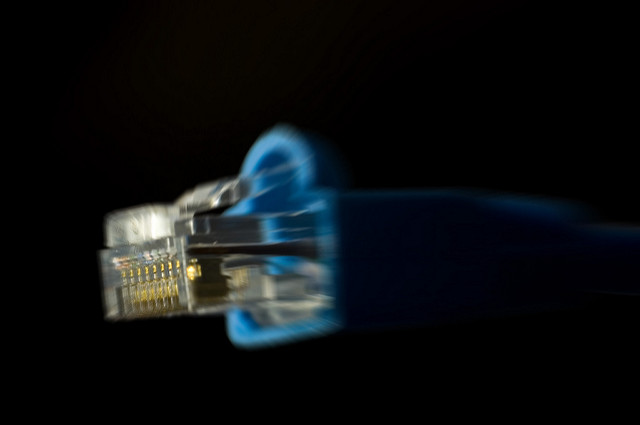White Nationalism’s Most Powerful Accelerant
Big Tech is serving up hate on an industrial scale, radicalizing scores of young white men. Atrocities like Christchurch's are the result.
This article has been adapted from an essay originally published on Substack.
Some years ago, the summer after college, I had a job at a small airport shuttling rental cars. One of my coworkers was a guy my age with whom I was friendly. He was modest and nice, and I enjoyed processing cars with him. One morning, we were the first to our garage, and with nothing else to do, he asked if I had seen any videos about the Amero, the currency that would replace the dollar once America was united with Canada and Mexico as part of a plot by the New World Order, or NWO.
That was in 2009, but it might as well have been a century ago. We’ve sunk much lower since then, when I witnessed a seemingly normal, intelligent person seduced by a far-right conspiracy theory, circulated by the kind of lunatics who claimed the U.N. was invading and Obama was a secret Muslim. As my experience at the garage hinted, the internet is now the world’s largest subduction zone, where an endless column of young, mostly white, males is overtaken and crushed by the unstoppable force of far-right extremism. We as a society are going to be living with the effects of this radicalization for the rest of our lives.
***
The subject of far-right radicalization was something I was thinking about a lot last week. Last Tuesday, I published an essay about how young white men were becoming Nazi terrorists through YouTube videos and social networks, in a process that took them deeper and deeper into an abyss of radical racial hatred. That following Friday, a white supremacist massacred 50 Muslims and wounded 50 more at a pair of mosques in Christchurch, New Zealand. The killer bade farewell to his fellow racists on gutter site 8chan, disseminating his inane “manifesto” via Twitter before livestreaming the atrocity on Facebook, via head-mounted camera.
Surely police analysis will reveal more in the weeks to come as detectives retrace the shooter’s descent into terrorism, but in a sense, it remains unnecessary; we do not need to learn any more of the particulars to know all we need to know. There are no answers to be found in a painstaking examination of one racist killer’s life story that could not already be surmised. Even his name is irrelevant.
All that matters is that this mass murderer, like so many who have preceded him of late, is a young man moved to violence by an international ideology of fascism—exhilarating, purpose-driven, meaningful. Ultimately, intoxicating. This ideology has entered the mainstream over the last decade to a degree unseen in my lifetime, finding adherents at the highest levels of power around the world. And the primary accelerant fueling this inferno is the internet.
Like razor-sharp boomerangs, the glories of Silicon Valley have turned in mid-air and shot backward, slicing through us and hurtling into a dark past. Violent misogyny, Islamophobia, anti-Semitism, gay-bashing, anti-black racism—you name it, you can find it, in ever more plentiful amounts online. The biggest tech platforms you can name—Facebook, Google, YouTube, Twitter, Reddit—serve up this kind of poison on an industrial scale, mushrooming and expanding at a rate that makes catching up with the spread almost impossible. Worst of all, those consuming this hatred, which has exploded into an epidemic over the past ten years, are still mostly boys.
The influencer economy recognizes that the old ways of advertising are not effective in reaching younger people. Today, affinities are based on the perceived authenticity of the speaker. And when these new, trusted internet icons preach far-right dogma, the results are predictably fatal. As put in a 2018 report by the Data & Society Research Institute, it is these “polished, well-lit microcelebrities” and the “captivating videos” they produce that radicalize viewers:
Content creators … claim to provide an alternative media source for news and political commentary. They function as political influencers who adopt the techniques of brand influencers to build audiences and “sell” them on far-right ideology. … Online celebrities can often convey deceptively subversive and powerful messages. Indeed, one reason YouTube is so effective for circulating political ideas is because it is often ignored or underestimated …”
Plugged into a technological ecosystem where it is possible to infinitely circle the drain, never hearing a word contrary to those of the charlatans, quacks and bigots promoted therein, radicalization is not some byproduct; it is the product.
The problem for these budding white nationalists is that their paths grow increasingly unsatisfying, even as their beliefs grow more extreme. True believers will never be truly fulfilled, because the gulf between the far right’s promises and what it actually delivers is too vast. And this leads to shame.
If the dissonance between fantasy and reality penetrates the radicalized Nazi’s occluded field of vision, he can only feel embarrassed at not living up to whatever Aryan ideal he’s supposed to embody. And if, as psychiatrist James Gilligan writes, “All violence is an attempt to replace shame with self-esteem,” it is not hard to see how the ultimate destination for some of these men will be an attempt at redemption via carnage.
Charlottesville ended with a pudgy white supremacist driving a car into a crowd. Dylann Roof, who GQ’s Rachel Kaadzi Ghansah described as “a child both of the white-supremacist Zeitgeist of the internet and of his larger environment” in the Cotton Belt, came to see massacring old women in a historic black church as an act of self-defense. Robert Bowers made one final post on the white supremacist social network Gab before opening fire on the Tree of Life synagogue in Pittsburgh, concluding, “Screw the optics, I’m going in.”
All of these men were radicalized on the internet.
***
What are we to do in such a state of chaos?
For a start, from the grassroots up, it is necessary to expose what the far-right and their sycophants actually believe as they amplify their message across this new network of communication. Exposing how they really think and talk has been the mission of a noble band of activists and educators, as seen in the recent demolition of the white power hate group Identity Evropa. This effort needs to extend to those “alt-lite” figures who successfully pass themselves off as less extreme, such as popular YouTube personalities Joe Rogan and Dave Rubin. Working as pilot fish for more extreme figures, their efforts, in concord with the YouTube algorithm, rapidly draw viewers toward more extreme fare. And there’s seemingly nothing they fear more than demonetization, deplatforming and an overnight plunge back into obscurity, à la Milo Yiannopoulos and Alex Jones.
As the Southern Poverty Law Center demonstrated through its successful bankrupting of the Aryan nations in the 1990s, the most effective means of ensuring the success of anti-fascist activists is via financial pressure. Deprived of any safe haven from which they can make money, such figureheads for the movement will fade away. Deprived of the oxygen currently offered by Big Tech and payment processors, the futures of Yiannopoulos auctioning off his portraits and Richard Spencer having his credit card rejected will be theirs, too.
Counterprogramming is possible, too. The most hardcore adherents to such ideologies are not beyond hope, given countervailing evidence. YouTube vlogger Natalie Wynn’s “Contrapoints” is a remarkably produced series that has helped deradicalize a number of nascent fascists, while former extremists such as Christian Picciolini or Arno Michaelis do important work in helping white nationalists exit the vicious cycle. If people can be radicalized simply by immersing themselves in the internet cesspool, then at least some of them can be deradicalized by leaving such unhealthy environs.
The greater problem remains structural, far bigger than the fate of any individual sleaze monger. Educating those susceptible to their messaging as to why these voices are so toxic will be a harder struggle, given the sheer scale Big Tech offers. It will not be easy to do so without meaningful action by the tech industry, which only now seems to be somewhat recognizing that they have become to America today what sidewalk display cases were to Nazi Germany. Whether the U.S. political system is up to the challenge is highly dubious, but I am heartened by New Zealand Prime Minister Jacinda Arden’s immediate and tenacious work to stop the spread of the Christchurch shooter’s video and extract answers from Facebook.
I see no contradiction between justice being served against the worst progenitors of right-wing extremism and empathy being exercised for the souls of those seduced. If far-right extremism is but a symptom of a national sickness, then the source of those issues is still upstream from the dead end of such violent hatred. And that’s our responsibility to combat—wherever and whenever we encounter it.
Your support matters…Independent journalism is under threat and overshadowed by heavily funded mainstream media.
You can help level the playing field. Become a member.
Your tax-deductible contribution keeps us digging beneath the headlines to give you thought-provoking, investigative reporting and analysis that unearths what's really happening- without compromise.
Give today to support our courageous, independent journalists.







You need to be a supporter to comment.
There are currently no responses to this article.
Be the first to respond.